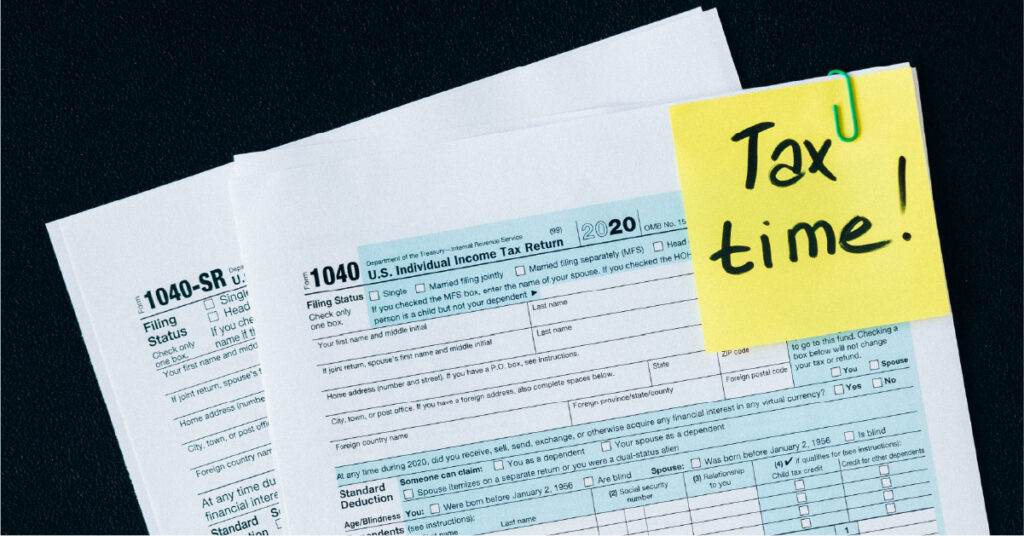Filing your IRAS income tax may be a daunting process especially if you are a new business owner, even seasoned business owners may sometimes be unfamiliar with the many regulations and terms of the Singapore corporate tax filing process. Here, at Poss, we understand the many struggles business owners may face, be it financially or with regulatory processes like filing taxes. Hence, in this article, we will be documenting a step-by-step guide on how to file IRAS corporate tax for businesses to help your business better understand and prepare for your next income tax filing period.

Singapore Corporate Tax Rate
Familiarising your business with the prevailing tax obligations, especially for a GST registered company, can help your business enjoy a smoother IRAS corporate tax filing process and even discover that your business qualifies for tax relief. For both local and foreign companies, Singapore’s company tax rate is set at a flat rate of 17%. If your business falls under the scope of a sole proprietorship and partnership, taxes are to be filed under your personal income tax.
Your business is considered a company if it falls under any of the following:
- Incorporated or registered in Singapore and typically has ‘Pte Ltd’ or ‘Ltd’ in its name.
- Foreign company registered in Singapore as a branch of a foreign company.
- Foreign company incorporated or registered outside Singapore.
After determining that your business can be categorized as a company, listed below are the key steps to take during the income tax filing process:
1. Keep Track Of The Key Income Tax Filing Dates
Singapore corporate tax rate is applied to the income generated by your business from the preceding year. For example, if 2024 is the “Year of Assessment” (YA) your business is being taxed in, then 2023 will be the “Basis Period” which your chargeable income will be derived from. To avoid any failures in complying with your income tax filing period or any misreporting of income, your business should pay close attention to your financial year end when settling business transactions.
One of the duties of a Singapore company secretary involves the responsibility of informing the company directors about key filing deadlines. Hence, it is key that the Singapore company secretary performs their role well to prevent non-compliance.
While you are free to decide when your business’ year end will be, it is important to note that if it does not fall on 31 December or if it lasts longer than 12 months, IRAS must be informed.
2. Determine Your Payable IRAS Income Tax
Your business will be taxed on the chargeable income accumulated in the relevant Basis Period. This amount is derived from deducting tax-allowable expenses from your business’ taxable income.
Having said that, the total amount of IRAS income tax payable from your business can be reduced through Singapore business tax reliefs or capital allowances, where applicable. Thus, it would be beneficial for your business to identify if any of the following tax reliefs can help reduce your chargeable income:
| Foreign Tax Credit: | [Double Tax Relief] Allows your business to claim tax relief for the amount of tax paid in a foreign jurisdiction equivalent to the amount of IRAS income tax payable. This is provided for under an Avoidance of Double Taxation Agreement (DTA). |
| [Unilateral Tax Relief] Allows your business to claim tax relief on all foreign-sourced income received in Singapore from jurisdictions that do not have DTAs with Singapore. |
|
| Group Relief: | Unutilized capital allowances, trade losses, or donations from the current year of 1 company can be deducted from the chargeable income of another company in the same group as if they belong to 1 single company. |
| Loss Carry-Back Relief: | Your business may bring unutilized capital allowances and trade losses from the current YA to reduce the amount of IRAS income tax payable in its Basis Period. |
On the other hand, capital allowances are IRAS income tax reliefs claimable for the wear and tear of qualifying fixed assets (i.e. “writing off the asset”). This is generally granted to relieve the amounts accumulated for non-deductible depreciation and can only be claimed when the expense is incurred (i.e. only when your business is liable to pay up).
One possible avenue of reducing the IRAS income tax payable by your business would be through IRAS corporate tax exemptions. This applies to both newly incorporated companies and companies that have been around for a while. However, it has some exemptions as to which companies are eligible for such as investment holding companies and companies who undertake property development. To determine how many exemptions your business is eligible for, check out the IRAS website here.
While these tax reliefs may seem enticing, it is important that you conduct your own due diligence. Their respective links provide conditions and more information that this guide has not covered. Additionally, the IRAS website provides more information on what constitutes taxable income and tax-allowable expenses, and also a handy calculator for easier computation of chargeable income.
If your business does not qualify for IRAS corporate tax relief but requires additional funds to sustain business activities, contact Poss for flexible financing solutions with transparent fees that carry no early prepayment penalties.

Forms Required For The IRAS Income Tax Filing Process
Your business will have to file two IRAS income tax forms every YA. This can be done through the Corppass website here. Firstly, an estimated chargeable income form must be filed within 3 months from the end of the financial year. This step will not be necessary for companies that qualify for the ECI filing waiver and for those that are specifically not required to file an ECI.
One scenario for exemption would be if your business has an annual revenue of $5 million or less. You can find the full list of exemptions here.
The second form your business will need to file depends on your annual revenue. The table below shows which form your business is required to file before 30th November every YA:
| Name Of Form | Company Characteristics | Required To Submit Supporting Documents? | |
| Form C-S | Singapore-incorporated companies with annual revenue of $5 million or less | Company must not be claiming any of the following in the YA: – Carry back of YA Capital Allowances/ Losses – Group Relief – Investment Allowance – Foreign Tax Credit and Tax Deducted at Source |
No. |
| Form C-S (Lite) | Singapore-incorporated companies with annual revenue of $200,000 or less | No. | |
| Form C | All other companies that do not fall under those above (i.e. annual revenue of more than $5 million) |
– financial statements; – tax computation; and – other supporting documents. |
|
To gain an in-depth understanding of which form your business should be filing and what each form entails, do visit the IRAS website as this is simply a general guide and further due diligence should also be performed.
Once you have filed the second form, you will have completed the IRAS income tax filing process if your business is not a GST registered company. Following the income tax filing process, your business should receive a Notice of Assessment (NOA) from IRAS by 31 May of the following year. Your business will be required to pay your Singapore business tax within one month from the date of the NOA.

Additional Step For GST-Registered Businesses
Do note that if you are a GST registered company, you will have to file your “GST Returns” in addition to the above steps. Timely filing of returns within one month from the end of the year is one of the many responsibilities of a GST registered business, and its Singapore company secretary, and must be done so even if there were no transactions made. This final step for GST registered businesses can be conveniently done online through this link here.
If your business is contemplating becoming a GST registered business or is looking for guidance to prepare for the impending GST hike in January 2024, our previous article provides tips on how to prepare your business for the hike and touches on voluntary GST registration.